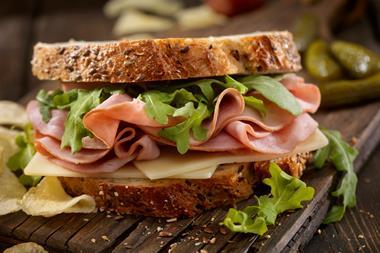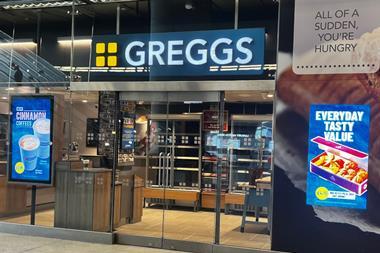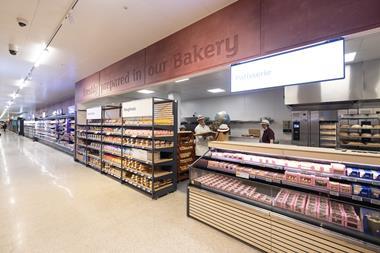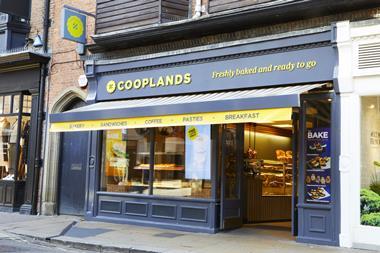The recent British Society of Baking (BSB) conference saw speakers discuss topics ranging from health and European trends to running a successful bakery. Here, Martyn Leek and Sylvia Macdonald outline some of the key points from the event.
Health & wellness, snacking and something called the fun factor are the influences driving growth in the baking industry.
That was the view of Chris Brockman, research manager – EMEA region at Mintel, which he espoused at the recent BSB conference, held at the Ardencote Manor Hotel in Warwickshire. And the reason for this secularisation? Well, according to Brockman, it’s the search for growth.
“Established bakery markets are struggling for growth,” he explained and are turning to categories to drive sales. However, there are areas of the world that are experiencing growth – mainly China and south-east Asia, which have seen a huge and recent surge of interest in Western bakery products.
In the UK, said Brockman, there was a big interest in health:
Despite that interest, products that used negative words, such as low salt or low sugar, were less appealing to the consumer than those that stressed additional or more positive factors, he added.
In the snacking and fun factor segments, he said, delegates should look to Japan for innovation. He added that if you wanted to move a product into the snacking arena, then brand pairing was the way to go, citing the recent example of Hovis and Kingsmill moving into the arena.
Dean Arbel, managing director of The Bread Factory, 2013 winner of the craft business category at the Baking Industry Awards, spoke about how he had built a career on listening. Previously a business consultant, when he was installed as the boss at The Bread Factory, he set about listening to what customers said, as well as what the people in the business were telling him. Since then, the company has grown to 475 people, uses 600 different ingredients and serves 1,500 customers. “I made a business through listening,” explained Arbel. “And I heard ‘I am not sure who we are and where we are going’.”
Gary Tucker, head of baking and cereal processing at Campden BRI, spoke on the topical and controversial subject of sugar and possible substitutes. He said the main problem was that sugar did not just sweeten products, it played seven different roles, all of them necessary in the baking process: flavouring, bulking agent, stabilising and controlling batter viscosity, influencing setting temperature, providing colour/flavour, acting as a preservative, and softening texture.
Sugar is clean label, whereas replacers often are not, he said. More and different ingredients would need to be used, affecting flavour and texture, as well as increasing costs and, sometimes, calories. “The implication is clear,” he said. “There is no satisfactory sugar substitute. Instead, more output (exercise) is needed for less accumulation (calories).”
Greg Woodhead, NPD manager of Bakels, looked at challenges facing bakers in three areas:
1. Healthy diet: how salt and saturated fat reductions can be achieved with enzyme solutions and also sourdoughs to add flavour.
2. Replacements: how replacing shortening or butter with high-performance softeners can dramatically reduce sat fats in enriched doughs, while replacing shortening with rapeseed oil and softeners in breads also achieves a reduction. And how palm-derived ingredients should become replaceable, using locally grown oils and crystalliser technology.
3. New technologies: how non-declarable enzyme quantities act on very specific substances in flour to improve cut definition on a roll, for example, and how allergen-free products can retain original ‘characteristics’, such as peanut-butter cookies made substituting no-peanut flavoured soya pieces.
Stéphanie Brillouet, head of marketing at Délifrance UK, enlightened the audience about European trends. These showed how people were returning to more basic/staple goods, though luxury items were still selling well, as were bakery snacks. Rising ingredient prices have led to more efficiency, and continuing consolidation of the bakery market. Importantly, the overall structure was changing, with fewer artisan bakers (22%), more retailers and convenience formats and discounters (50%) and more bakery/coffee chains (7%). Other European trends showed that artisan bakers were opting for ‘designer’ bakeries.
Some bakery chains were positioning themselves as ‘artisanal’ - even if some goods were made at a central industrial bakery, she added. Retailers used aggressive promotions and were refreshing their formats making their bakeries seem more like a destination in-store shop to drive footfall. Discounters have begun to broaden their range from the basics. And what might the next craze be after cupcakes? Why, eye-catching decorated eclairs of course. Plain chocolate is now plain boring, she concluded.



































No comments yet